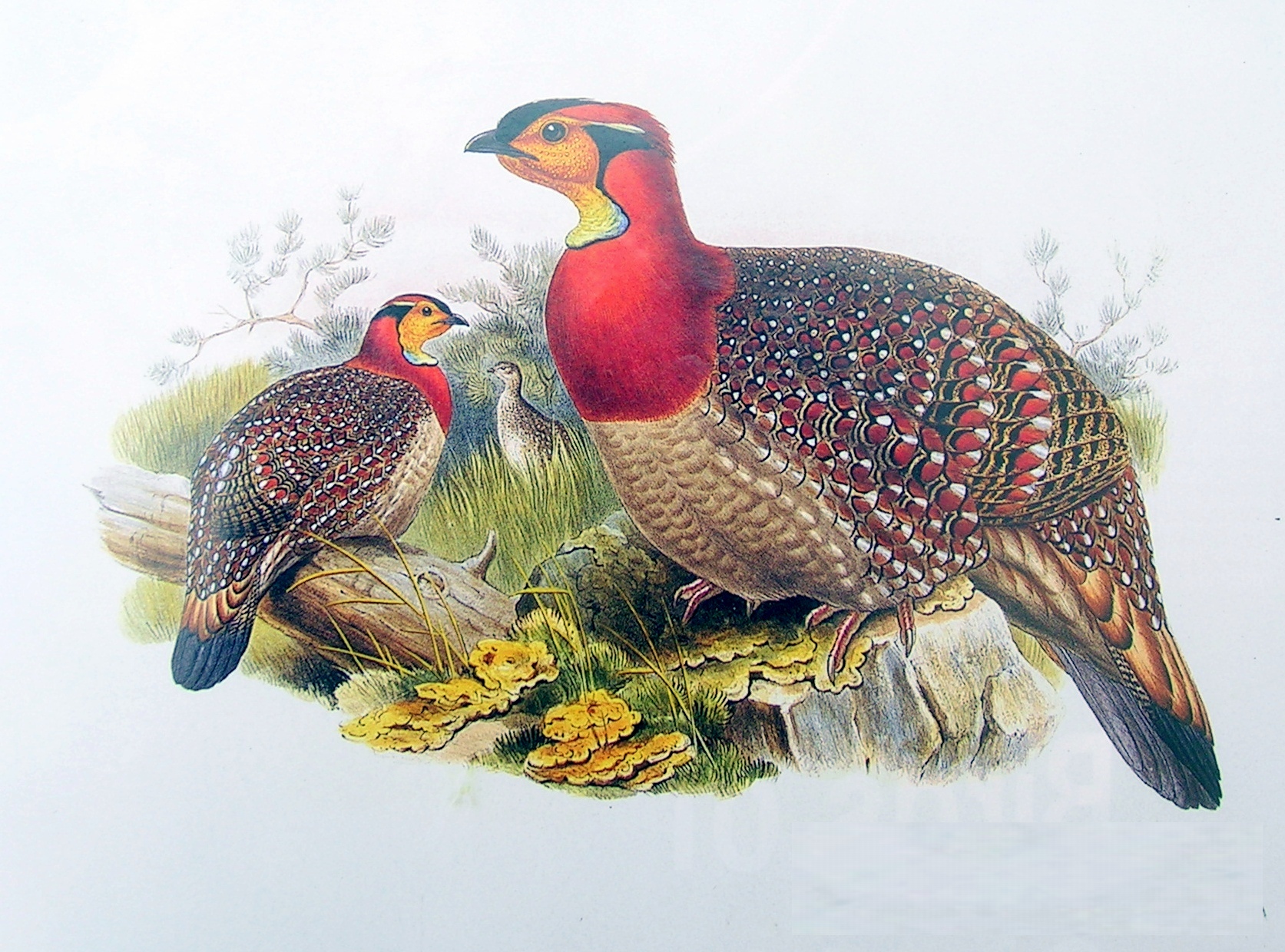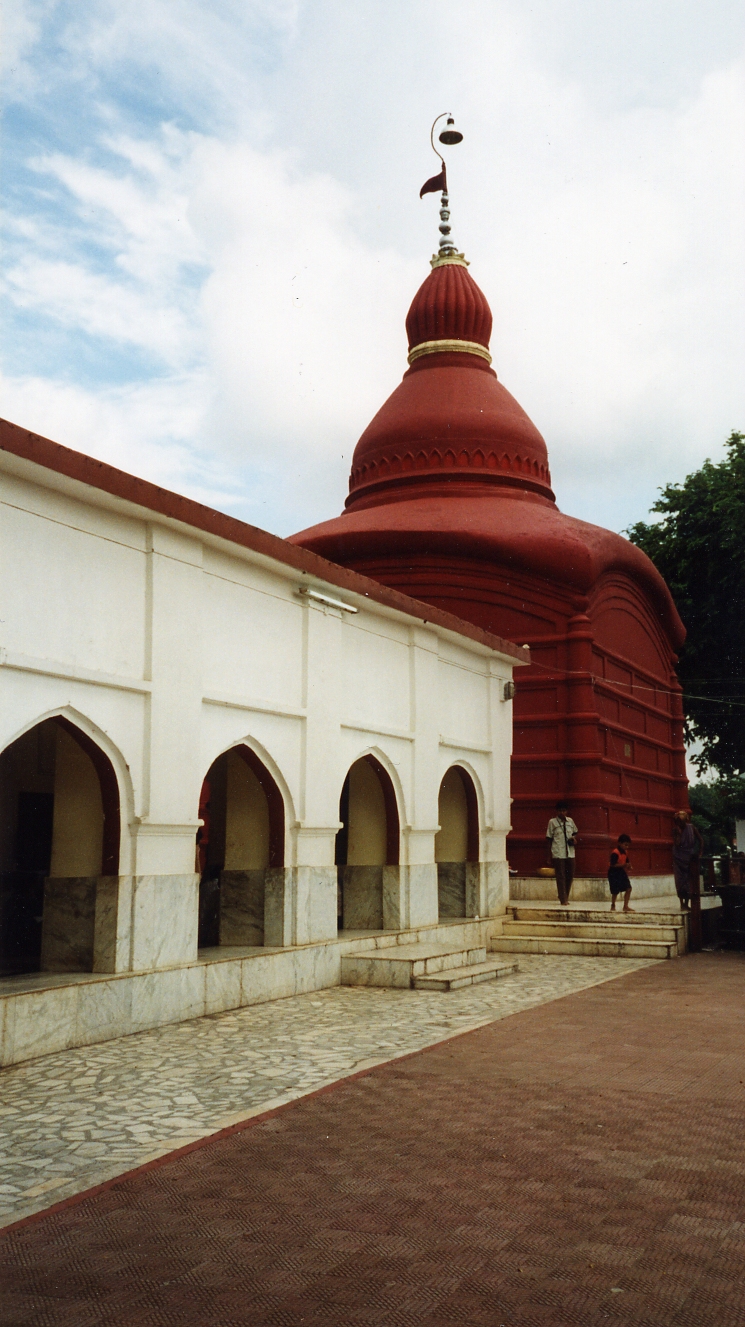|
Brahmaputran Languages
The Sal languages are a branch of Sino-Tibetan languages spoken in northeast India, parts of Bangladesh, and Burma. Alternative names ''Ethnologue'' calls the group "JingphoŌĆōKonyakŌĆōBodo", while Scott DeLancey (2015) refers to it as "Bodo-Konyak-Jinghpaw" (BKJ). Glottolog lists this branch as ŌBrahmaputran (brah1260)ĆØ. Classification within Sino-Tibetan Scott DeLancey (2015)DeLancey, Scott. 2015. "Morphological Evidence for a Central Branch of Trans-Himalayan (Sino-Tibetan)." ''Cahiers de linguistique - Asie oriental'' 44(2):122-149. December 2015. considers the Sal languages, which he refers to as ''Bodo-Konyak-Jinghpaw'' (BKJ), to be part of a wider Central Tibeto-Burman group. Internal classification noted that the BodoŌĆōGaro, Konyak, and Jingpho (Kachin) languages, as well as the extinct Chairel language, shared distinctive roots for "sun" and "fire". proposed a grouping of the BodoŌĆōGaro, Konyak (Northern Naga), and Jingpho languages, characterized by several ... [...More Info...] [...Related Items...] OR: [Wikipedia] [Google] [Baidu] |
India
India, officially the Republic of India (Hindi: ), is a country in South Asia. It is the seventh-largest country by area, the second-most populous country, and the most populous democracy in the world. Bounded by the Indian Ocean on the south, the Arabian Sea on the southwest, and the Bay of Bengal on the southeast, it shares land borders with Pakistan to the west; China, Nepal, and Bhutan to the north; and Bangladesh and Myanmar to the east. In the Indian Ocean, India is in the vicinity of Sri Lanka and the Maldives; its Andaman and Nicobar Islands share a maritime border with Thailand, Myanmar, and Indonesia. Modern humans arrived on the Indian subcontinent from Africa no later than 55,000 years ago., "Y-Chromosome and Mt-DNA data support the colonization of South Asia by modern humans originating in Africa. ... Coalescence dates for most non-European populations average to between 73ŌĆō55 ka.", "Modern human beingsŌĆö''Homo sapiens''ŌĆöoriginated in Africa. Then, int ... [...More Info...] [...Related Items...] OR: [Wikipedia] [Google] [Baidu] |
Bodo Languages
The Boroic languages (also simply Boro languages in a wider sense) are a group of Sino-Tibetan languages spoken in northeastern India. They are: *Boro * Dimasa * Kachari *Kokborok (Tripuri) *Tiwa Tiwa and Tigua may refer to: * Tiwa Puebloans, an ethnic group of New Mexico, US * Tiwa (Lalung), an ethnic group of north-eastern India * Tiwa language (India), a Sino-Tibetan language of India * Tiwa languages, a group of Tanoan languages of the ... The Barman language is a recently discovered Boroic language spoken by the Barman Kacharis. ''Ethnologue'' (21st edition) include ''Riang'' and ''Usoi'' as separate languages within the Kokborok language cluster. Jacquesson (2017:112)Jacquesson, Fran├¦ois and van Breugel, Seino (2017). "The linguistic reconstruction of the past: The case of the Boro-Garo languages." In ''Linguistics of the Tibeto-Burman Area'', 40, 90-122. [Note: English translation of the French original: Jacquesson, Fran├¦ois (2006). ŌĆśLa reconstruction linguistique d ... [...More Info...] [...Related Items...] OR: [Wikipedia] [Google] [Baidu] |
Chiang Mai
Chiang Mai (, from th, Ó╣ĆÓĖŖÓĖĄÓĖóÓĖćÓ╣āÓĖ½ÓĖĪÓ╣ł , nod, , Ó╣ĆÓĖłÓĖĄÓĖóÓĖćÓ╣āÓĖ½ÓĖĪÓ╣ł ), sometimes written as Chiengmai or Chiangmai, is the largest city in northern Thailand, the capital of Chiang Mai province and the second largest city in Thailand. It is north of Bangkok in a mountainous region called the Thai highlands and has a population of 1.19 million people as of 2022, which is more than 66 percent of the total population of Chiang Mai province (1.8 million). Chiang Mai (meaning "New City" in Thai) was founded in 1296 as the new capital of Lan Na, succeeding the former capital, Chiang Rai. The city's location on the Ping River (a major tributary of the Chao Phraya River) and its proximity to major trading routes contributed to its historic importance. The city (''thesaban nakhon'', Thesaban#City-municipality, "city municipality") of Chiang Mai officially only covers most parts (40,2 km┬▓) of the Mueang Chiang Mai district in the city centre and has a pop ... [...More Info...] [...Related Items...] OR: [Wikipedia] [Google] [Baidu] |
Payap University
Payap University ( th, ÓĖĪÓĖ½ÓĖ▓ÓĖ¦ÓĖ┤ÓĖŚÓĖóÓĖ▓ÓĖźÓĖ▒ÓĖóÓĖ×ÓĖ▓ÓĖóÓĖ▒ÓĖ×; ), established in 1974, is a private and non-profit institution founded by the Foundation of the Church of Christ in Thailand. Payap University is a liberal arts and pre-professional school offers a doctoral degree in peacebuilding; masters in divinity, linguistics, TESOL, law, MBA and music; and bachelor degrees in arts, sciences, accountancy, business, economics nursing, law, and Christian theology. Payap is a founding member of the Association of Private Higher Education Institutions in Thailand and an active member of the Association of Christian Universities and Colleges in Asia, as well as the Association of Southeast Asian Institutions of Higher Learning. Academic programs Payap is a liberal arts and pre-professional school offering 22 Thai language degrees and 7 English-based language International degree programs in 12 colleges/faculties. International College At its International College (IC) ... [...More Info...] [...Related Items...] OR: [Wikipedia] [Google] [Baidu] |
Kuki-Chin Languages
The Kuki-Chin languages (also called Kuki-Chin-Mizo, Kukish or South-Central Tibeto-Burman languages) are a branch of 50 or so Sino-Tibetan languages spoken in northeastern India, western Myanmar and southeastern Bangladesh. Most speakers of these languages are known as Mizo in Mizoram and Manipur. Also, as Kuk─½ in Assamese and Bengali and as Chin in Burmese; some also identify as Zomi. Mizo is the most widely spoken of the Kuki-Chin languages. Kuki-Chin is sometimes placed under Kuki-ChinŌĆōNaga, a geographical rather than linguistic grouping. Most Kuki-Chin languages are spoken in and around Chin State, Myanmar, with some languages spoken in Sagaing Division, Magway Region and Rakhine State as well. In Northeast India, many Northern Kuki-Chin languages are also spoken in Mizoram State and Manipur State of India, especially in Churachandpur District, Pherzawl District, Kangpokpi District, Senapati District. Northwestern Kuki-Chin languages are spoken mostly in Chandel ... [...More Info...] [...Related Items...] OR: [Wikipedia] [Google] [Baidu] |
Pyu Language (Burma)
The Pyu language (Pyu: ; my, ßĆĢßĆ╗ßĆ░ ßĆśßĆ¼ßĆ×ßĆ¼, ; also Tircul language) is an extinct Sino-Tibetan language that was mainly spoken in what is now Myanmar in the first millennium CE. It was the vernacular of the Pyu city-states, which thrived between the second century BCE and the ninth century CE. Its usage declined starting in the late ninth century when the Bamar people of Nanzhao began to overtake the Pyu city-states. The language was still in use, at least in royal inscriptions of the Pagan Kingdom if not in popular vernacular, until the late twelfth century. It became extinct in the thirteenth century, completing the rise of the Burmese language, the language of the Pagan Kingdom, in Upper Burma, the former Pyu realm. The language is principally known from inscriptions on four stone urns (7th and 8th centuries) found near the Payagyi pagoda (in the modern Bago Township) and the multi-lingual Myazedi inscription (early 12th century). These were first deciphered by Charl ... [...More Info...] [...Related Items...] OR: [Wikipedia] [Google] [Baidu] |
Luish Languages
The Luish, Asakian, or Sak languages are a group of Sino-Tibetan languages belonging to the Sal branch. They are spoken in Burma and Bangladesh, and consist of the Sak, Kadu, and Ganan languages. In recent years, Luish languages have been influenced by Burmese and Chakma. Although Luish languages are now widely scattered and spoken by relatively small populations, Luce (1985) suggests that the Luish languages were ŌĆ£once spread over the whole north of Burma, from Manipur perhaps to northern Yunnan.ŌĆØ Matisoff (2013) proposes the name ''Asakian'', since ''Lui'' or '' Loi'' were used by the Meithei to refer to slaves. Although many speakers of Luish languages refer to themselves as ''Sak'', ''Cak'', or similar variations, speakers of Ganan and Mokhwang Kadu do not refer to themselves as ''Sak'' or ''Asak''. Extinct languages Matisoff (2013) has demonstrated that the extinct Andro, Sengmai, and Chairel languages of Manipur are also Luish languages. Andro, Sengmai, and C ... [...More Info...] [...Related Items...] OR: [Wikipedia] [Google] [Baidu] |
Nagaland
Nagaland () is a landlocked state in the northeastern region of India. It is bordered by the Indian states of Arunachal Pradesh to the north, Assam to the west, Manipur to the south and the Sagaing Region of Myanmar to the east. Its capital city is Kohima and its largest city is Dimapur. The state has an area of with a population of 1,980,602 as per the 2011 Census of India, making it one of the smallest states in India.Census of India 2011 Govt of India Nagaland became the 16th state of India on 1 December 1963. It is home to a rich variety of natural, cultural and environmental resources. Nagaland is a mountainous state and lies between the parallels of 95 and 94 degrees east longitude and 25.2 and 27.0 degrees latitude north. The high-profile [...More Info...] [...Related Items...] OR: [Wikipedia] [Google] [Baidu] |
Arunachal Pradesh
Arunachal Pradesh (, ) is a state in Northeastern India. It was formed from the erstwhile North-East Frontier Agency (NEFA) region, and became a state on 20 February 1987. It borders the states of Assam and Nagaland to the south. It shares international borders with Bhutan in the west, Myanmar in the east, and a disputed border with China in the north at the McMahon Line. Itanagar is the state capital of Arunachal Pradesh. Arunachal Pradesh is the largest of the Seven Sister States of Northeast India by area. Arunachal Pradesh shares a 1,129 km border with China's Tibet Autonomous Region. As of the 2011 Census of India, Arunachal Pradesh has a population of 1,382,611 and an area of . It is an ethnically diverse state, with predominantly Monpa people in the west, Tani people in the centre, Mishmi and Tai people in the east, and Naga people in the southeast of the state. About 26 major tribes and 100 sub-tribes live in the state. The main tribes of the state are Adi, Nyshi ... [...More Info...] [...Related Items...] OR: [Wikipedia] [Google] [Baidu] |
Naga People
Nagas are various ethnic groups native to northeastern India and northwestern Myanmar. The groups have similar cultures and traditions, and form the majority of population in the Indian states of Nagaland and Manipur and Naga Self-Administered Zone of Myanmar; with significant populations in Arunachal Pradesh and Assam in India; Sagaing Region and Kachin State in Myanmar (Burma). The Nagas are divided into various Naga ethnic groups whose numbers and population are unclear. They each speak distinct Naga languages often unintelligible to the others, but all are somehow in a way loosely connected to each other. Etymology The present day Naga people have been called by many names, like 'Noga' by Assamese, 'Hao' by Manipuri and 'Chin' by Burmese. However, over time 'Naga' became the commonly accepted nomenclature, and was also used by the British. According to the Burma Gazetteer, the term 'Naga' is of doubtful origin and is used to describe hill tribes that occupy the count ... [...More Info...] [...Related Items...] OR: [Wikipedia] [Google] [Baidu] |
Tripura
Tripura (, Bengali: ) is a state in Northeast India. The third-smallest state in the country, it covers ; and the seventh-least populous state with a population of 36.71 lakh ( 3.67 million). It is bordered by Assam and Mizoram to the east and by Bangladesh to the north, south and west. Tripura is divided into 8 districts and 23 sub-divisions, where Agartala is the capital and the largest city in the state. Tripura has 19 different tribal communities with a majority of the Bengali population. Bengali, English and Kokborok are the state's official languages. The area of modern Tripura ŌĆö ruled for several centuries by the Manikya Dynasty ŌĆö was part of the Tripuri Kingdom (also known as Hill Tippera). It became a princely state under the British Raj during its tenure, and acceded to independent India in 1947. It merged with India in 1949 and was designated as a 'Part C State' ( union territory). It became a full-fledged state of India in 1972. Tripura lies in a geographic ... [...More Info...] [...Related Items...] OR: [Wikipedia] [Google] [Baidu] |




.jpg)

